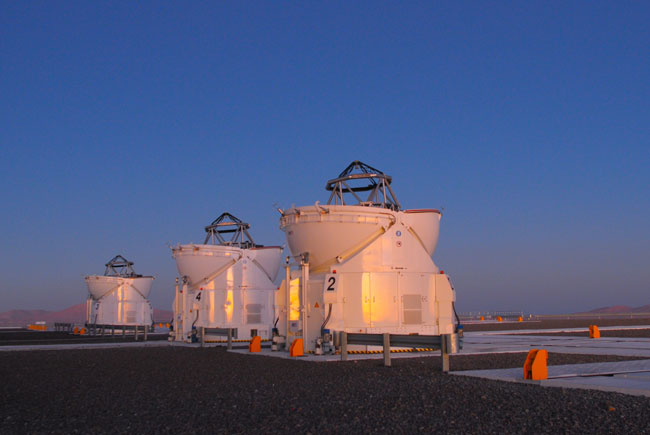A seminal study by researchers from Trinity, in collaboration with the Max Planck Institute for Radioastronomy (MPIfR) in Germany and NASA in the USA, has obtained the clearest-ever images of Eta Carinae, one of the heaviest stars in our Galaxy.
Eta Carinae is the most massive star within ten thousand light-years. The system is actually comprised of two stars surrounded by a nebulous known as the Homunculus nebula, which contains material that was ejected from the system during the mid-19th century in what was called the “Great Eruption”. The larger star in the system shines about five million times brighter than the sun.
The smaller star, known as the “secondary” is slowing being evaporated as it orbits the larger, “primary” star. While the secondary is smaller, it still outweighs the sun by about 30 times and shines about million times brighter. Every five and a half years or so the two stars come unusually close to one another, buffeting each other with extremely fast outflows called stellar winds. The stellar winds produced by both stars collide at a speed of 10 million kilometres per hour.
These violent outflowing winds present in Eta Carinae normally herald the end of a star’s life as a supernova, and this study provides researchers with clues about the evolution and death of such stars.
In the past in was not possible to achieve images this clear, or to resolve this violent collision of stellar winds.
In a press statement, Prof Gerd Weigelt of MPIfR, and leader of the study, said: “Our dreams came true, because we can now get extremely sharp images in the infrared regime. The ESO interferometer provides us with a unique opportunity to improve our physical understanding of Eta Carinae and many other monster objects.”
When the outflows of the two stars collide gas of about 50 million degrees is produced emitting vast amounts of light which the astronomers used to produce new images of the system. By analysing the changing distribution of light around the stars the team were able to determine how the gas moved in the areas where the winds collided.
The team used a technique called interferometry, a new imaging technology which combines the light from three telescopes to obtain extremely high quality images. The team employed three movable telescopes from the European Southern Observatory’s (ESO) Very Large Telescope Interferometer to capture the infrared light of Eta Carinae to generate exceptionally sharp images of the star. By locating the movable telescopes far apart they form a 130-metre telescope producing very sharp and detailed images can be obtained.
Jose Groh, Professor of Astrophysics in Trinity, said: “These are unprecedented images obtained with the ESO telescopes. We were able to zoom in and see the heavyweight champion in our Galaxy like never before. The images provide us with a front-row view of how monster stars interact with each other. The heavier star is winning for now, but the faster companion star may change the fate of the system in the future”.







